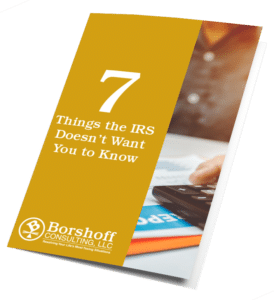Claiming Dependents
Claiming dependents can be very beneficial. The government realizes that having dependents costs you money, and they have worked to ensure that you receive the best benefits, including credits, deductions, and other benefits.
In this article, we will look at what qualifies a dependent and all of the benefits you can receive for having a dependent. We will look at what exactly the definition is of a dependent and whether you can claim a person as a dependent or not.
The rules are complicated, so through each step of the way, we’ll look at an example of what makes up a dependent. This way, you can best understand the tests required for dependents to be eligible for you to claim on your tax return.
Since it is so beneficial to claim dependents, let’s make sure the rules apply for the dependent you are hoping to claim.
Who Qualifies as a Tax Dependent?
According to the IRS, a dependent is a person other than the taxpayer or spouse who entitles the taxpayer to claim a dependency exemption.
The IRS also states that the term “dependent” can mean either a “qualifying child” or “qualifying relative.”
Who is a Qualifying Child?
To be a qualifying child, all of the following tests must be met:
- Dependent Taxpayer Test
- Joint Return Test
- Citizen or Resident Test
- Relationship Test
- Age Test
- Residency Test
- Support Test
1. Dependent Taxpayer Test
If you can be claimed as a dependent by another person, you cannot claim anyone else as a dependent; even if you have a qualifying child or a qualifying relative, you cannot claim that person as a dependent.
Example: If your mother is claiming you as a dependent, you are not allowed to claim anyone as a dependent.
2. Joint Return Test
To meet this test, a qualifying child must be:
- Unmarried,
- Married but does not file MFJ (married filing jointly), or
- Files MFJ and claims a refund of withheld tax, neither the dependent nor spouse can claim personal exemption on their joint return.
Example: Your child is married but files married filing separately. For this test, he or she is eligible to be a dependent for you.
3. Citizen or Resident Test
To meet this test, a qualifying child must be a United States citizen or resident or a resident of Canada or Mexico.
Example: Your child lives in Mexico. For the purposes of this test only, he is eligible to be a dependent for you.
4. Relationship Test
To meet this test, a qualifying child must be:
- Your son, daughter, stepchild, foster child, adopted child, or a descendant of any of them, or
- Your sibling, halfsibling, stepsibling, or a descendant of any of them.
Example: Your stepchild or adopted child can be a dependent on you on your tax return.
5. Age Test
To meet this test, a qualifying child must be:
- Under the age of 19 (on the last day of the calendar year),
- A full-time student under the age of 24 (on the last day of the calendar year), AND younger than you (or your spouse if filing MFJ [married filing jointly]), or
- Permanently and totally disabled at any time during the year, regardless of age.
To be a student, the qualifying child must be during some part of 5 calendar months:
- A full-time student at a school with regular teaching staff, course of study, and a regularly enrolled student body at the school, or
- A student taking a full-time, on-farm training course given by a school described in, or by a state, county, or local government agency.
Example: Your 21-year-old child is a part-time student who has only attended school 3 months out of the year. She cannot be claimed as a dependent on your tax return.
6. Residency Test
To meet this test, a qualifying child must:
- Have lived with you for more than half of the year
- Meet one of the exemptions listed below:
- Temporary absences due to illness, business, vacation, or military service, or
- Death or birth of a child (a child who was born or died during the year).
Example: Your child has joined the military, so he has not lived with you for half of the year. He is qualified to be a dependent on your tax return.
7. Support Test
To meet this test, a qualifying child must not have provided more than half of his or her own support.
Example: Your child has supported himself for 7 months. He is not eligible to be your dependent on your tax return.
Remember: To claim a dependency exemption, all 7 tests must be met.
Who gets to claim the dependent?
There are special rules for a child that is the “qualifying child” of more than one person. Generally, only one person can claim the child as a “qualifying child” for the following tax benefits:
- Earned Income Tax Credit (EITC),
- Dependency exemption for the child,
- Head of household (HOH) filing status,
- The child tax credit,
- The additional child tax credit,
- Credit for other dependents,
- Credit for the child and dependent care expenses, and
- Exclusion from income for dependent care benefits.
The IRS also uses tiebreaker rules, which states the “qualifying child” generally goes to:
- Parents who file a married joint tax return.
- The parent who is the child’s parent rather than a relative
- The parent who lived with the child the longest during the year
- The parent with the highest adjusted gross income if the qualifying child spend equal time with each parent or if the time frame of who spent more time with the parent is unclear
- The parent with the highest adjusted gross income if neither person is the child’s mother or father
For more information about the special rules and who gets to claim the dependent as a “qualifying child,” check out IRS Publication 501.
Consult with a tax accountant if you have more questions about a “qualifying child” of more than one person.
Who is a Qualifying Relative?
To be a qualifying relative, all of the following tests must be met:
- Dependent Taxpayer Test
- Joint Return Test
- Citizen or Resident Test
- Not a Qualifying Child Test
- Member of Household or Relationship Test
- Gross Income Test
- Support Test
1. Dependent Taxpayer Test
If you can be claimed as a dependent by another person, you cannot claim anyone else as a dependent; even if you have a qualifying child or a qualifying relative, you cannot claim that person as a dependent.
Example: If your grandfather is claiming you as a dependent, you are not allowed to claim anyone as a dependent.
2. Joint Return Test
To meet this test, a qualifying relative must be:
- Unmarried,
- Married but does not file MFJ (married filing jointly), or
- Files MFJ and claims a refund of withheld tax, neither the dependent nor spouse can claim personal exemption on their joint return.
Example: Your brother is married but files married filing separately. For this test, he is eligible to be a dependent for you.
3. Citizen or Resident Test
To meet this test, a qualifying relative must be:
- A United States citizen, national, or resident, or
- A resident of Canada or Mexico.
Example: Your brother lives in Mexico. For the purposes of this test only, he is eligible to be a dependent for you.
4. Not a Qualifying Child Test
A child is not your qualifying relative if the child is your qualifying child or the qualifying child of anyone else.
Example: Your son is your qualifying child. For this reason, he cannot also be your qualifying relative.
5. Member of Household or Relationship Test
Taxpayers meet the Member of Household test for persons who live with them under the following conditions:
- The dependent doesn’t have to be related to the taxpayer.
- The dependent must live with the taxpayer all year except for temporary absences (including attending school, taking vacations, and staying in the hospital).
- The relationship between the taxpayer and the dependent must not violate local laws.
Taxpayers will meet the Relationship test if their relatives are one of the following:
- Child
- Parent
- Sibling
- Stepparent
- Stepchild
- Stepsibling
- Grandparent
- Grandchild
- Son-in-law
- Daughter-in-law
- Mother-in-law
- Father-in-law
- Brother-in-law
- Sister-in-law
If related by blood, relatives also include:
- Uncle or aunt, and
- Niece or nephew
Cousins DO NOT meet the relationship test.
Note: There are special rules for children born during the year, adopted children, and foster children. If you have questions about this, consult with a tax accountant.
Example: Your brother is in the hospital. For this test, he passes and can be considered a qualifying relative.
Remember: To claim a dependency exemption, all tests must be met, including either the relationship or the member of household test.
6. Gross Income Test
Taxpayers will meet this test for persons whose gross incomes are less than the exemption amount.
- For 2019, the exemption amount is $4,200.
What is gross income?
- All taxable income in the form of money, property, and services;
- Unemployment compensation and certain scholarships; and
- Not welfare benefits and nontaxable Social Security benefits.
Example: Your brother made $4,225 in 2019. He is not eligible to be a qualifying relative based on this test.
7. Support Test
To meet this test, the taxpayer must provide more than half of a person’s total support for the entire year. Total support items include:
- Food, clothing, shelter, education, health care, recreation, and transportation; and
- Welfare, food stamps, and housing provided by the state.
Compare the dollar value of the support provided by the taxpayer with the total support the person received from all sources.
Note: There are special rules for dependents who receive support from multiple sources and for children of divorced or separated parents. Consult with a tax accountant if you encounter this situation.
Example: Your brother has supported himself for 7 months out of the year. He is not eligible to be a dependent on your tax return based on this test.
Remember: To claim a dependency exemption, all 7 tests must be met.
Tax Deductions for Taxpayers with Dependents
One of the advantages of being able to claim a dependent is the fact that you are eligible for these deductions if you meet certain criteria. Having a qualifying dependent can increase the value of these deductions, if applicable:
For the tax year 2019, married couples filing jointly (MFJ) can deduct up to $24,400. If you are filing single status, the deduction is $12,200.
If you are eligible to claim the head of household (HOH) filing status, the deduction is $18,350. For taxpayers who are of the age of 65 or older, they get an additional $1,650 if filing head of household or single, and $1,300 if filing married filing jointly.
For more information about the medical expense deduction, check out this article about how to make the most of tax breaks for medical expenses by CNBC or meet with a tax accountant to clarify this deduction.
For 2019, the tuition and fees deduction is available for $4,000 or $2,000, depending on your modified adjusted gross income (MAGI) and your filing status. Married couples who file separate returns are not eligible.
If your modified adjusted gross income was less than $65,000 in 2019 and you filed the single filing status, you are eligible for the $4,000 deduction. The same holds true for married couples filing joint tax returns, but they must earn less than $130,000 as a couple.
If your modified adjusted gross income was more than $65,000 in 2019 and less than $80,000, and you filed the single filing status, you are eligible for the $2,000 deduction. The same holds true for married couples filing joint tax returns, but they must earn more than $130,000 and less than $160,000 as a couple.
If your modified adjusted gross income was more than $80,000, you are not eligible for the deduction. The same holds true for married couples filing joint tax returns, but if they earn more than $160,000 as a couple, they are not eligible for the deduction.
For more information about the tuition and fees deduction, check out this article by Business Insider or contact us to discuss this tax deduction in detail.
Other Tax Breaks for Taxpayers with Dependents
Head of Household Filing Status
You may be able to claim this filing status, meaning you can receive better tax deductions if you are unmarried.
If you can claim the Head of Household filing status, it’s most beneficial. You receive a lower tax rate and a higher standard deduction that those who use the Single filing status.
For 2019, the standard deduction for the Head of Household filing status was $18,350.
The tax rates for 2019 for the HOH filing status are as follows:
| 2019 Tax Rate | Head of Household Income |
| 10% | $0 – $13,850 |
| 12% | $13,851 – $52,850 |
| 22% | $52,851 – $84,200 |
| 24% | $84,201 – $160,700 |
| 32% | $160,701 – $204,100 |
| 35% | $204,101 – $510,300 |
| 37% | $510,301 or more |
Generally, to be able to claim the Head of Household filing status, you must meet 3 requirements:
- You must be unmarried as of the last day of the tax year,
- You must have paid more than half of the cost of keeping up a home for the year, and
- You must have a qualifying dependent living with you for more than half of the year (except for excused absences).
For more information on claiming the Head of Household filing status, check out the IRS’s website or contact us for help with your tax return.
Tax Credits for Taxpayers with Dependents
For more information on the tax credits you may be eligible for, please visit the IRS’s website here.
This tax credit is offered by the government to help offset the cost it takes to have a family. The amount available to you will depend on your income level.
For the 2019 tax year, this credit is worth up to $2,000 per qualifying child dependent (under age 17). To qualify, you have to earn at least $2,500.
The Additional Child Tax Credit
For the 2019 tax year, this refundable credit is applied when the Child Tax Credit is more than what the taxpayer owes in income taxes. For the 2019 tax year, this credit is worth $1,400.
Note: You must have earned income of at least $2,500.
You might be able to claim the Child and Dependent Care tax credit if you had expenses for the care of a qualifying dependent. This credit is designed to help working individuals or those who are looking for work and must pay for child or dependent care while they do so.
For the 2019 tax year, this credit is worth up to 35% of the first $3,000 you spent caring for one dependent or $6,000 for more than one dependent.
The Earned Income Tax Credit is designed to help working people with low to moderate-income. There are specific criteria that you must meet, and you are required to file a tax return, even if you expect no refund or do not have to pay any tax.
This credit is worth up to $6,660 if you have three or more qualifying child dependents, but income limits apply.
For the 2019 tax year, this credit is worth up to $500 per qualifying relative dependent. This tax credit is for taxpayers who do not or cannot claim the Child Tax Credit.
Who is NOT a qualifying dependent?
Generally, the following people will not count as dependents:
- Anyone if another taxpayer is claiming you as a dependent
- Non-citizens, resident aliens, or individuals who are not United States national, or if they are not residents of Canada or Mexico
- Workers/Employees
- Foreign exchange students
- Cousins or other non-qualifying relatives
Can I claim my unborn baby as a dependent?
For tax purposes, a baby must have been born before 12:01 AM on January 1 of the year following the tax year.
So, if your baby was born on December 31, 2019, at 11:59 PM, he or she is eligible to be a qualifying dependent on your taxes for the 2019 tax year. After midnight, you would have to wait to claim your baby until the next tax year.
Can I claim my pet as a dependent?
If you are curious as to whether your pets can count as dependents, you aren’t the only one. You may feel like your furry friends are part of the family, because, like children, you support them financially. You buy their food and pay their vet and grooming bills.
Unfortunately, for tax purposes, pets are not considered dependents. A qualifying dependent must be a human being.
Pets can be costly, especially when they cause damage to your home or become ill, raking up medical expenses.
If your pet is a guard dog protecting your business, you may be able to claim him or her as a business expense. Likewise, if you have a guide dog used for medical purposes, you may be able to claim him or her as a medical expense.
Other Benefits
Some limits and specific rules apply to the additional benefits (credits, deductions, etc.) you may receive from having a dependent.
There are also additional benefits you may receive from having a dependent such as the Lifetime Learning Credit or the American Opportunity Tax Credit for educational expenses for your qualifying dependents.
The Lifetime Learning Credit is for educational expenses (tuition and related expenses) paid for eligible students who are enrolled at an eligible educational institution. The American Opportunity Tax Credit is also for educational expenses paid for eligible students for the first four years of higher education.
Conclusion
To maximize the benefits you receive for having a dependent or for more information on these benefits, please contact us today. We can help you get the most bang for your buck while ensuring your tax return is completed correctly.
Are you concerned about, or are you expecting an audit? We have a comprehensive audit guide for you on our blog. Please check it out, so you know what to expect in the case of an audit.
We are here to help! You can trust Indiana’s tax expert to steer you in the right direction when it comes to your tax return, so don’t hesitate to get in touch with us!





